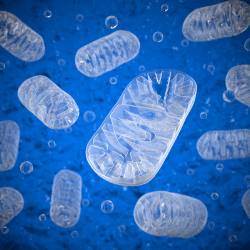-
Assessment and Diagnosis of Individuals with Autism Spectrum Disorder (ASD)
Julie M. Wolf, Ph.D.
Associate Professor of Clinical Child Psychology
Yale Child Study Center, USA -
CDC Grand Rounds: Autism Spectrum Disorder
Autism spectrum disorder (ASD) is a group of developmental disabilities that can cause significant social, communication and behavioral challenges. Global prevalence of autism has increased twenty- to thirty-fold since the earliest studies 40--50 years ago. Just-published CDC data shows an estimated prevalence of 1 in 68 children affected by an autism spectrum disorder. ASD occurs in all racial, ethnic, and socioeconomic groups, and is almost five times more common among boys than girls. Tracking and diagnosing ASD can be difficult, since there is no single biological marker, and diagnostic criteria have recently changed. Although signs may appear early in life, many children with ASD do not receive a final diagnosis until they are over the age of 4. This delay means that children with ASD and their families might not get the help they need during the most critical periods of development.
Comments on this video are allowed in accordance with our comment policy: http://www.cdc.gov/SocialMedia/Tools/CommentPolicy.html
This video can also be viewed at
http://www.cdc.gov/about/grand-rounds/archives/2014/April2014.htm -
Mitochondrial defects may lead to Autism Spectrum Disorder
 Researchers at Children's Hospital of Philadelphia (CHOP) have demonstrated that autism spectrum disorder (ASD) may be caused by defects in the mitochondria of brain cells. The findings were published online by the Proceedings of the National Academy of Sciences.
Researchers at Children's Hospital of Philadelphia (CHOP) have demonstrated that autism spectrum disorder (ASD) may be caused by defects in the mitochondria of brain cells. The findings were published online by the Proceedings of the National Academy of Sciences.Multiple studies have revealed hundreds of mutations associated with autism spectrum disorder, but there is no consensus as to how these genetic changes cause the condition. Biochemical and physiological analyses have suggested that deficiencies in mitochondria, might be a possible cause. Recent studies have shown that variants of mitochondrial DNA (mtDNA) are associated with autism spectrum disorder.
The study team hypothesized that if defects in the mitochondria do predispose patients to ASD, then a mouse model in which relevant mtDNA mutations have been introduced should present with autism endophenotypes, measurable traits similar to those seen in patients. For this model, the traits related to autism included behavioral, neurophysiological, and biochemical features.
"Autism spectrum disorder is highly genetically heterogeneous, and many of the previously identified copy number and loss of function variants could have an impact on the mitochondria," said Douglas C. Wallace, PhD, Director of the Center for Mitochondrial and Epigenomic Medicine and the Michael and Charles Barnett Endowed Chair in Pediatric Mitochondrial Medicine and Metabolic Diseases at CHOP, co-senior author of the study, with Eric D. Marsh, MD, PhD, attending pediatric neurologist, Division of Child Neurology at CHOP.
The researchers - including co-first authors Tal Yardeni, PhD and Ana G. Cristancho, MD, PhD - introduced a mild missense mutation in the mtDNA ND6 gene into a mouse strain. The resulting mouse exhibited impaired social interactions, increased repetitive behaviors and anxiety, all of which are common behavioral features associated with autism spectrum disorder. The researchers also noted aberrations in electroencephalograms (EEG), more seizures, and brain-region specific defects on mitochondrial function. Despite these observations, the researchers found no obvious change in the brain's anatomy. These findings suggest that mitochondrial energetic defects appear to be sufficient to cause autism.
"Our study shows that mild systemic mitochondrial defects can result in autism spectrum disorder without causing apparent neuroanatomical defects," Wallace said. "These mutations appear to cause tissue-specific brain defects. While our findings warrant further study, there is reason to believe that this could lead to better diagnosis of autism and potentially treatments directed toward mitochondrial function."
###
This work was supported by the Neurobehavior Testing Core at the University of Pennsylvania and the Intellectual and Developmental Disabilities Research Center at CHOP and Penn supported by grant U54HD086984. This work was also supported by National Institutes of Health grants MH108592, OD010944, and 5K12HD043245, U.S. Department of Defense grants W81XWH-16-1-0401 and PR202997, a grant from Accure, Inc., a CHOP K-readiness grant, and a CHOP Foerderer grant.
Yardeni et al, "An mtDNA mutant mouse demonstrates that mitochondrial deficiency can result in autism endophenotypes." Proc Natl Acad Sci U S A, online February 1, 2021. DOI: 10.1073/pnas.2021429118.
Additional resources
United Mitochondrial Disease Foundation
MitoAction
Mitochondrial Medicine SocietySiddiqui MF, Elwell C, Johnson MH (2016) Mitochondrial Dysfunction in Autism Spectrum Disorders. Autism Open Access 6 (5):. DOI: 10.4172/2165-7890.1000190 PMID: 27928515.
-
Neurobiology of autism
Prague Symposium of Child Neurology and Developmental Epileptology
Under the auspices of the Charles University and the ICNA
4-5 November 2011, PraguePaolo Curatolo, MD
Dept. Pediatric Neurosciences
“Tor Vergata” University
Rome, Italycuratolo@uniroma2.it
Join Our Newsletter
Why Join the ICNA?
